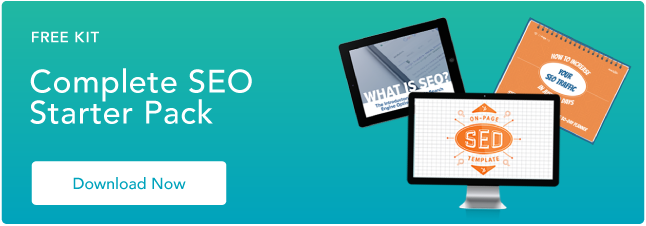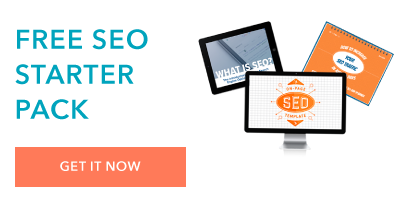On the final day of my brother’s visit to Boston last week, we decided to cap off his vacation with a visit to the best seafood restaurant in the city. With a quick Google search -- one that pleasantly kept me on the results page instead of forcing me to click on links -- we were able to enjoy the best meal of the entire week.
Nowadays, finding places on Google is incredibly fast and easy. The search engine gives you all the information you need without making you visit a store’s website, crowning Google as the top tool for discovering and vetting almost any type of merchant.
In fact, 82% of people find information about local businesses on search engines, which demonstrates that one of the best ways to promote your brand is by customizing your business’ information on Google with a free Google My Business profile, like the one pictured below.
Since Google My Business profiles are free, it’s logical to assume that Google would try to monetize the surging popularity of local search by selling ad space on a company’s branded keyword search results.
But Google actually decided to do the opposite -- they gave every company with a Google My Business account access to a tool that lets them advertise on their branded keyword search results for free. It's called Google Posts.
What are Google Posts?
A Google Post is content that promotes a business’ announcement, offer, event, or product update on their branded keyword search results. Depending on the nature of your customers’ search query and your content, your Google Post will either show up on Google’s search or map results.
Picture Credit: Search Engine Land
When crafting your Google Posts, you’ll have ample opportunity to grab your audience’s attention. You can describe your offer, product, or event in up to 300 words, upload an image, video, or GIF, and add call-to-actions to prompt product purchases, reservations, and newsletter signups. Your audience can share your Google Posts on social media too.
Picture Credit: Search Engine Land
Google Posts also has an analytics feature, which shows you how many impressions and clicks your posts get. This might seem like a limited amount of metrics, but they ultimately provide enough information to help you grasp which Google Posts resonated with your audience and which ones did not.
To make sure your business is constantly publishing fresh content on their search results, Google sets a seven day life span on each of your Google Posts. The only posts that won’t expire after seven days are ones promoting events, but they’ll disappear after the events end.
Google Posts: An SMB Marketer's Dream Come True?
Originally launched as “Candidate Cards” in 2016, Google Posts would only show up in relevant search queries for political candidates who wanted to promote their brand on the search engine.
A few months later, Google decided to roll them out to a select group of small businesses. And by July 2017, the search engine made Google Posts available to every business with a Google My Business account.
Giving every business the opportunity to use Google Posts levels the playing field in the digital marketing space. SMBs without much SEO expertise are now able to leverage the massive reach of local search to grow their business.
For example, PatientPop, a healthcare practice growth platform with under 400 employees, generated an 11% increase in appointment bookings this year just by optimizing their Google Posts.
But even though new distribution tactics like Google Posts are incredibly innovative, they still aren’t able to pull average content out of the abyss of mediocrity.
If your content isn’t engaging, regardless of the strength of your marketing strategy, it won’t produce results. Crafting captivating content is the only way you’ll attract your audience’s attention and gain their trust. To effectively connect with people and inspire action using Google Posts, here are three copywriting tips you can follow.
3 Copywriting Tips for Crafting Captivating Google Posts
1. Craft headlines that appeal to people’s self-interest or give news.
With only 58 characters to spare in your title, you must get to the point of your offer. But to get people to click, you also need to clearly communicate your offer’s value, benefits, and relevance. How do you grab someone’s attention with such a little room to work with?
According to John Caples, one of the most successful copywriters of the 20th century, headlines that strictly focus on appealing to people’s self-interest or giving news are scientifically proven to be the best way to capture attention. And there are certain words and phrases that can pull your customers in and prompt them to read the rest of your copy. Here's a list of them to help you craft sharp headlines void of any fluff.
2. Publish Google Posts that are clear, concise, and compelling.
Even though you technically have up to 1,500 characters to describe your offer, only the first 100 characters show up in Google’s knowledge panel.
To immediately hook people and persuade them to click on your offer or read the rest of your description, try sticking to one message per Google Post. Spotlighting your offer’s main benefit or feature, especially in the first 100 characters, will make it easy for your customers to understand its value and increase the likelihood of their click-through.
Another way to boost your Google Post click-through rate is by leveraging the scarcity principle. People value objects and experiences that are rare -- having something that most people want, but can’t have, boosts our self-worth and sense of power.
And since each Google Post has a seven day lifespan, you can also align your offer’s deadline with your post’s expiration date and use words and phrases that evoke a sense of urgency, like “Exclusive offer” or “Limited availability”. These psychology-backed tactics will skyrocket your offer’s perceived scarcity and, in turn, its consumer demand.
3. Use a large, high-quality visual to make your Google Post stand out.
On a website that’s dominated by text, vivid visuals are refreshing and eye-catching. But supplementing your copy with a standard stock photo or amateur iPhone picture won’t grab anyone’s attention. Vibrant photos will make your Google Post stand out -- the brain is programmed to respond to striking visuals -- so make sure you take photos or record videos with good framing, lighting, and a decent camera.
You also want your visual to take up most of the space on your post, so make sure your photos have the minimum image resolution of 720 pixels by 520 pixels.
Content marketing without good content is just marketing.
As a free and relatively easy way to leverage the popularity of local search, Google Posts might seem like a cheat code for marketers. But when countless brands are fighting for a limited amount of attention, you must resist the urge of leaping onto the latest, hottest marketing trend before considering how you’ll create content that’s actually worthwhile.
There’s already enough mediocre content saturating our industry. To stand out from the crowd of brands hollering the same exact message, crafting compelling content should be your highest priority. Marketing comes after.
[Read More ...]


No comments:
Post a Comment